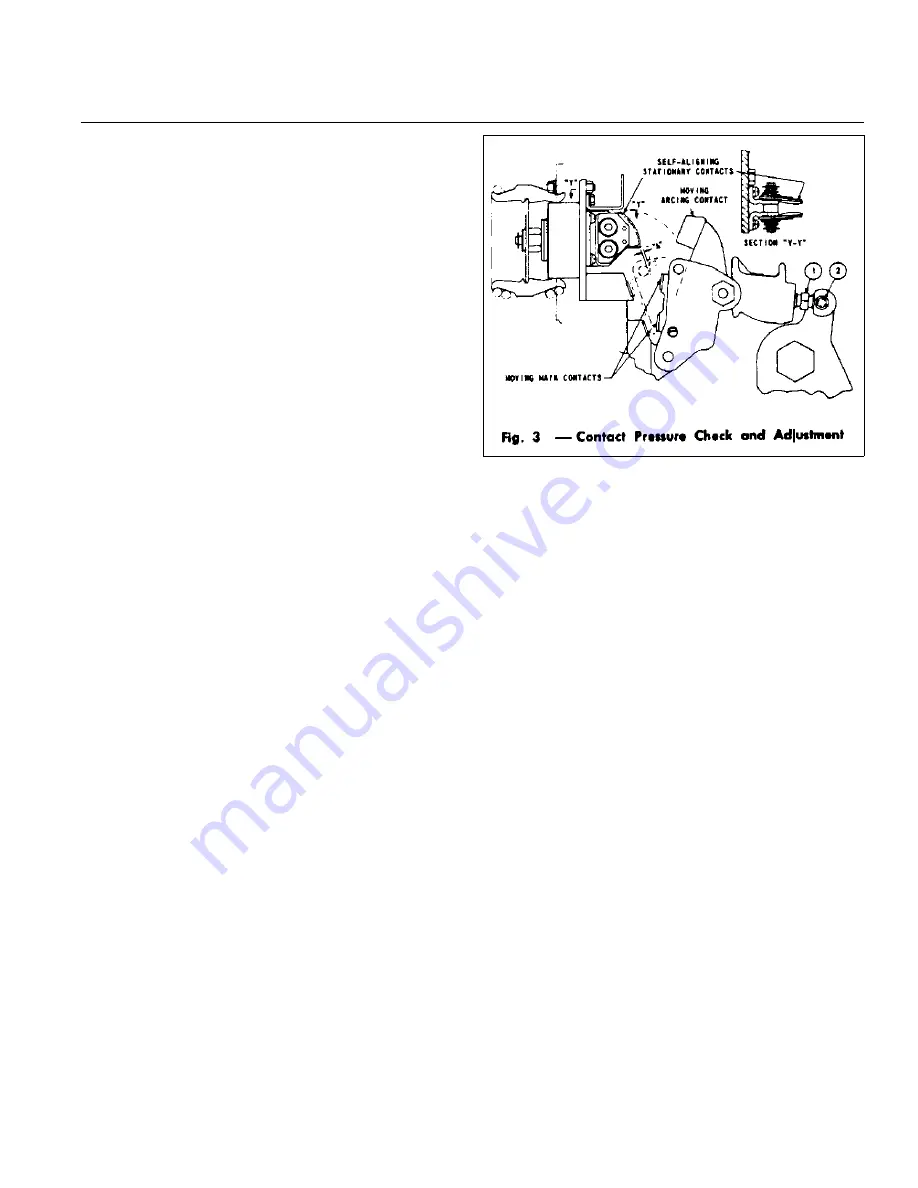
IB 6.2.11.1-2C
Page 13
ABB
Arc Chutes
a. Remove the two arc chute mounting screws and
retainer moldings. Lift arc chute (1, Figure 1) up and
draw out.
b. Inspect for breakage of the arc chute frame or
retainer molding. Check for presence of foreign
particles such as chips of metal. Discoloration and
carbon build-up are normal in an arc chute that has
seen service, but the arc plates should not be
significantly worn, as indicated by severe warping of the
cut-out pattern.
Insulation Structure
Insulated parts should be checked for damage. Dust
and dirt should be removed by air or wiped with a clean,
lintless cloth. Do not use any oil based solvents. Spray
solvents vary as to type and should not be used. The
moldings at the rear of the breaker must be kept clean
to avoid dielectric problems. Wipe dust away and blow
out with clean, dry, compressed air. Additional steps
must be taken if dust accumulation continues to be a
problem.
MPSC-2000 Trip Device Removal and Installation
1. Remove the two nylon screws which retain the trip
system harness plug to the MPSC-2000 device. Retain
for re-use. If the breaker has the Voltage Interface
Module (VIM) option, disconnect the four-pin plug from
the trip unit.
2. Remove the six screws holding the breaker top shelf
and remove the shelf with the MPSC-2000 unit
attached.
3. To reinstall, reverse the above procedure. Be sure to
secure the DB-25 plug in the MPSC-2000;
energizing
the breaker with this plug removed or not secured
will result in serious damage to the device and
perhaps injury to nearby personnel
. In addition, the
breaker will not be able to provide circuit protection.
(NOTE: Metallic screws must not be used to retain the
trip system harness. Should a metallic screw fall into
the trip system, serious damage can result.)
Electrical Components (EO Breakers Only)
1. Rack the circuit breaker to the “TEST” position.
Make sure the closing springs are charged.
2. Operate the local (if installed) or remote electrical
close push button as applicable to close the circuit
breaker. This will confirm operation of the close coil.
3. While maintaining the close signal, trip the circuit
breaker with the shunt trip. The Solid State Control
Device (SSCD) should prevent the reclosing of the
circuit breaker until the close signal is removed and
then re-applied. SSCD replacement may be required if
it does not perform as indicated.
4. During the previous test, electrical operation of the
shunt trip and the spring charging motor is confirmed.
Malfunction of either requires repair or replacement.
Contacts
a. Remove dirt or grease on contacts with a clean,
lintless cloth.
b. Discoloration of the main contacts does not
necessarily indicate damage. However, this condition
may be removed by opening and closing the circuit
breaker under no-load conditions.
Contact Pitting
A moderate amount of pitting will not interfere with the
operation of the arcing contacts. Should it be
necessary to dress the arcing contacts to remove small
burrs, cover the mechanism with a cloth. Follow the
contour of the contacts with light wipes of a fine file and
do not attempt to eliminate pitting entirely. When
finished, remove cloth and wipe off any remaining dirt or
filings.
Should the main contacts show more than moderate
pitting, check the contact pressure.
Contact Pressure Check and Adjustment (See




































